
WARNING:
If the information in these instructions are not followed exactly,
a fire or explosion may result causing property damage,
personal injury or loss of life.
FOR YOUR SAFETY
Do not store or use gasoline or other flammable vapors and
liquids in the vicinity of this or any other appliance.
Installation and service must be performed by a qualified
installer, service agency or the gas supplier.
FOR YOUR SAFETY
What to do if you smell gas:
Do not try to light any appliance
Do not touch any electrical switch:
do not use any phone in your
building.
Immediately call your gas supplier
from a neighbour's phone. Follow
the gas supplier's instructions.
If you cannot reach your gas
supplier, call the fire department.
FPI FIREPLACE PRODUCTS INTERNATIONAL LTD. 6988 Venture St., Delta, BC Canada, V4G 1H4918-027b
MODELS: U39-NG Natural Gas U39-LP Propane
ULTIMATE U39
Direct Vent Freestanding Gas Stove
01/09/06
Owners &
Installation Manual
www.regency-fire.com
Tested by:
Installer: Please complete the details on the back cover
and leave this manual with the homeowner.
Homeowner: Please keep these instructions for future reference.

2
Regency U39 ULTIMATE Direct Vent Freestanding Gas Stove
REGENCY
ULTIMATE Direct Vent Freestanding Gas Stove
To the New Owner:
Congratulations! You are the owner of a state-of-the-art ULTIMATE Direct Vent Gas Stove by FPI Fireplace
Products International Ltd. The Regency Gas Series of hand crafted appliances has been designed to provide
you with all the warmth and charm of a woodstove, at the flick of a switch. The models U39-NG, and U39-
LP of this series has been approved by Warnock Hersey for both safety and efficiency. As it also bears our
own mark, it promises to provide you with economy, comfort and security for many trouble free years to follow.
Please take a moment now to acquaint yourself with these instructions and the many features of your
ULTIMATE Direct Vent Freestanding Gas Stove.
U39-NG & U39-LP
UNIT SPECIFICATIONS

Regency U39 ULTIMATE Direct Vent Freestanding Gas Stove
3
TABLE OF CONTENTS
Page Page
System Data Chart................................................................21
Gas Connection ....................................................................21
High Elevation........................................................................21
Conversion from Natural Gas to Propane........................22
Conversion to Lower BTU ...................................................23
Gas Pipe Pressure Testing ................................................23
Valve Description ..................................................................23
Aeration Adjustment .............................................................24
Log Installation ......................................................................24
Front Door Installation..........................................................25
Wiring Diagram .....................................................................26
Optional Wall Thermostat....................................................26
Optional Remote Control Installation................................26
Final Check ............................................................................27
Operating Instructions
Operating Instructions ..........................................................27
Lighting Procedure ...............................................................27
Shutdown Procedure............................................................27
First Fire ..................................................................................27
Convection Fan Operation...................................................28
Copy of Lighting Plate Instructions ....................................28
Adjusting Flame Height .......................................................28
Normal Operating Sounds of Gas Appliances ...............28
Maintenance
Maintenance Instructions ....................................................29
General Vent Maintenance ..................................................29
Gold Plated Doors ................................................................29
Log Replacement .................................................................30
Door Gasket...........................................................................30
Latch Adjustment ..................................................................30
Glass Replacement .............................................................30
Fan Maintenance...................................................................31
Removing Valve .....................................................................32
Replacement Parts List.......................................................33
Warranty
Warranty..................................................................................39
Safety Label
Safety Labels .......................................................................... 4
Installation
Specifications ..........................................................................5
Information for Mobile/Manufactured Home
After First Sale..................................................................5
Before You Start.......................................................................5
General Safety Information....................................................6
Installation Checklist..............................................................6
Clearances to Combustibles ...............................................6
Manufactured Mobile Home Requirements .......................7
Locating Your ULTIMATE Gas Stove ...................................7
Louver Installation...................................................................7
Combustion and Ventilation Air............................................7
Venting ......................................................................................7
Installation Precautions .........................................................7
Exterior Vent Terminal Locations .........................................8
Rigid Pipe Venting Components List..................................9
Rigid Pipe Venting Systems
Horizontal or Vertical Terminatioins ..........................10
Safety Precautions for the Installer ....................................11
Venting Arrangements - Horizontal
Terminations: All Systems ..........................................11
Venting Arrangements - Vertical Terminations ...............11
- Straight Vertical ...........................................................11
- Offset Vertical...............................................................11
Vent Restrictor Position .......................................................11
Horizontal and Vertical Venting With Two Elbows ..........12
DV Stove Horizontal Vent Kit................................................13
Dura-Vent Termination Kits .................................................15
Planning Your Dura-Vent Installation ................................15
Dura-Vent Venting Components Parts List......................15
Dura-Vent Horizontal Installation .......................................16
Dura-Vent Vertical Termination Installation .....................17
Offset Chart ............................................................................18
Cathedral Ceiling Installations ...........................................18
Support Extension - Round or Square ..............................19
Converting a Class-A Metal Chimney or Masonry
Chimney to a Direct Vent System ...............................19
- Instructions for Converting a Factory Built
Metal Chimney.............................................................19
- Instructions for Converting a Masonry Chimney...20

4
Regency U39 ULTIMATE Direct Vent Freestanding Gas Stove
This is a copy of the label that accompa-
nies each ULTIMATE Direct Vent Free-
standing Gas Stove. We have printed a
copy of the contents here for your review.
SAFETY LABEL
The safety label is located on the inside of
the drop down pedestal door.
Copy of Safety Label for U39 Gas Stove
NOTE: Regency units are constantly be-
ing improved. Check the label on the unit
and if there is a difference, the label on the
unit is the correct one.
For the State of Massachusetts, installation and repair must be done by a plumber or gasfitter
licensed in the Commonwealth of Massachusetts.
For the State of Massachusetts, flexible connectors shall not exceed 36 inches in length.
For the State of Massachusetts, the appliances individual manual shut-off must be a t-handle type
valve.

Regency U39 ULTIMATE Direct Vent Freestanding Gas Stove
5
IMPORTANT:
SAVE THESE
INSTRUCTIONS
The ULTIMATE Direct Vent Freestanding Gas
Stove must be installed in accordance with
these instructions. Carefully read all the in-
structions in this manual first. Consult the
building authority having jurisdiction to deter-
mine the need for a permit prior to starting the
installation.
Note: Failure to follow the instructions
could cause a malfunction of the
heater which could result in death,
serious bodily injury, and/or prop-
erty damage. Failure to follow
these instructions may also void
your fire insurance and/or war-
ranty.
Note: These instructions take prece-
dence over Simpson Dura-Vent
instructions.
SPECIFICATIONS
Fuels:U39-NG is approved for use with nat-
ural gas.
U39-LP is approved for use with lique-
fied petroleum gases (propane).
Electrical: 120V A.C. system.
Circulation Fan: Variable speed, 125/75.
Log Sets: Ceramic fibre, 7 per set.
Vent System: Coaxial (6-5/8" outer / 4" inner
liner) rigid flue and termination cap.
INFORMATION FOR
MOBILE/
MANUFACTURED
HOMES AFTER
FIRST SALE
This Regency product has been tested and
listed by Warnock Hersey as a Direct Vent Wall
Furnace to the following standards: CAN/CGA-
2.17-M91 and ANSI Z21.88b-2003/CSA 2.33b-
2003.
This Direct Vent System Appliance must be
installed in accordance with the manufactur-
er's installation instructions and the Manufac-
tured Home Construction and Safety Standard,
Title 24 CFR, Part 3280, or the current Standard
of Fire Safety Criteria for Manufactured Home
INSTALLATION
Installations, Sites, and Communities ANSI/ NFPA
501A, and with CAN/CSA Z240-MH Mobile
Home Standard in Canada.
This appliance installation must comply with the
manufacturer's installation instructions and local
codes, if any. In the absence of local codes
follow the current National Fuel Gas Code,
ANSI Z223.1 and the current National Electrical
Code ANSI/NFPA 70 in the U.S.A., and the
current CAN/CGA B149 Gas Installation Code
and the current Canadian Electrical Code CSA
C22.1 in Canada.
AND CIRCULATING AIR PASSAGE-
WAYS OF THE APPLIANCE BE
KEPT CLEAN.
DUE TO HIGH TEMPERATURES,
THE APPLIANCE SHOULD BE LO-
CATED OUT OF TRAFFIC AND
AWAY FROM FURNITURE AND
DRAPERIES.
WARNING: FAILURE TO INSTALL
THIS APPLIANCE CORRECTLY
WILL VOID YOUR WARRANTY AND
MAY CAUSE A SERIOUS HOUSE
FIRE.
CHILDREN AND ADULTS SHOULD
BE ALERTED TO THE HAZARDS
OF HIGH SURFACE TEMPERA-
TURES, ESPECIALLY THE FIRE-
PLACE GLASS, AND SHOULD
STAY AWAY TO AVOID BURNS
OR CLOTHING IGNITION.
YOUNG CHILDREN SHOULD BE
CAREFULLY SUPERVISED WHEN
THEY ARE IN THE SAME ROOM AS
THE APPLIANCE.
CLOTHING OR OTHER FLAMMA-
BLE MATERIAL SHOULD NOT BE
PLACED ON OR NEAR THE APPLI-
ANCE.
1) Provide adequate clearances for servic-
ing, proper operation and around the air
openings into the combustion chamber.
2) The appliance may be installed on a flat,
solid, continuous surface (e.g. wood, met-
al, concrete). This may be the floor, or it can
be raised up on a platform to enhance its
visual impact. The appliance may be in-
stalled on carpeting, tile, wood flooring or
other combustible material, because the
appliance's metal pedestal base extends
the full width and depth of the appliance.
The ULTIMATE Direct Vent Freestanding
Gas Stove can be installed in a wide variety
of ways and will fit nearly any room layout.
It may be installed in a recessed position,
framed out into the room, or across a
corner.
3) The ULTIMATE Direct Vent Freestanding
Gas Stove is approved for alcove installa-
tions, which meet the clearances listed on
page 7. This unit is approved for manufac-
tured home installations, see page 11 for
the required vent arrangements. If installed
This Regency Mobile/Manufactured
Home Listed appliance comes factory
equipped with a means to secure the
unit.
This Regency Mobile/Manufactured
Home listed appliance comes
equipped with a dedicated #8 ground
lug to which an 18 gauge copper wire
from the steel chassis ground must be
attached.
This appliance may only be in-
stalled in an aftermarket perma-
nently located, manufactured (mo-
bile) home, where not prohibited
by local codes.
This appliance is only use with the
type of gas indicated on the rating
plate. This appliance is not con-
vertible for use with other gases,
unless a certified kit is used.
BEFORE YOU START
Safe installation and operation of this appliance
requires common sense, however, we are
required by the Canadian Safety Standards
and ANSI Standards to make you aware of the
following:
INSTALLATION AND REPAIRS
SHOULD BE DONE BY A QUALI-
FIED SERVICE PERSON. THIS AP-
PLIANCE SHOULD BE INSTALLED,
REPAIRED, INSPECTED BEFORE
USE AND AT LEAST ANNUALLY BY
A QUALIFIED SERVICE PERSON.
MORE FREQUENT CLEANING MAY
BE REQUIRED DUE TO EXCESSIVE
LINT FROM CARPETING, ETC. IT
IS IMPERATIVE THAT THE CON-
TROL COMPARTMENT, BURNERS

6
Regency U39 ULTIMATE Direct Vent Freestanding Gas Stove
INSTALLATION
8) Any safety glass removed for servicing
must be replaced prior to operating the
appliance.
9) To prevent injury, do not allow anyone who
is unfamiliar with the operation to use the
fireplace.
INSTALLATION
CHECKLIST
1) Check Clearances to Combustibles (pages
6 and 7), location of unit (page 7) and
venting requirements (pages 7 to 9).
2) Install Louvers, page 7.
3) Install venting, either with the DV Stove
Horizontal Vent Kit (page 10) or the Dura-
Vent Termination kits (page 12). Set Vent
Restrictors, page 9. If converting a Class-
A Metal Chimney or Masonry Chimney to a
Direct Vent system, see instructions on
pages 19 to 21.
4) Make gas connections, page 21. Test the
pilot. Must be as per diagram, page 29.
5) If necessary, convert to Propane (page 22)
or convert to lower Btu rating (page 23).
6) Test Gas Pressure, page 23.
7) Install log set, see page 24.
8) Install Front Door Front, page 25.
9) Install optional Remote Control, or Wall Ther-
mostat, page 26.
10)Final check, page 27.
Before leaving this unit with the customer, the
installer must ensure that the appliance is firing
correctly and operation fully explained to
customer.
This includes:
1) Clocking the appliance to ensure the cor-
rect firing rate (rate noted on label) after
burning appliance for 15 minutes.
2) If required, adjusting the primary air to
ensure that the flame does not carbon. First
allow the unit to burn for 15-20 min. to
stabilize.
CAUTION: Any alteration to the product
that causes sooting or carboning that
results in damage is not the responsibil-
ity of the manufacturer.
into a manufactured home the unit must be
bolted down to the floor.
4) This appliance is Listed for bedroom instal-
lations when used with a Listed Millivolt
Thermostat. Some areas may have further
requirements, check local codes before
installation.
5) This appliance is Listed for Alcove installa-
tions, maintain minimum Alcove clearances
as follows, minimum width of 48" (1219mm),
a maximum depth of 36" (914mm), and
minimum ceiling height of 64"(1626mm).
6) We recommend that you plan your installa-
tion on paper using exact measurements
for clearances and floor protection before
actually installing this appliance. Have a
qualified building inspector review your
plans before installation.
GENERAL SAFETY
INFORMATION
1) The appliance installation must conform
with local Canadian Electrical Code.
2) The appliance when installed, must be elec-
trically grounded in accordance with local
codes, or in the absence of local codes with
the current National Electrical Code, ANSI/
NFPA 70 or CSA C22.1 Canadian Electrical
Code.
3) The appliance should be inspected for
shipping damage before use and serviced
annually by a professional service
person. More frequent cleaning may be
required due to excessive lint from carpet-
ing, bedding material, etc. It is imperative that
control compartments, and circulating air
passageways of the appliance be kept
clean and free from excessive lint from
carpeting.
4) See general construction and assembly
instructions. The appliance and vent should
be enclosed when installed in or passing
through a living area, where children may
come in contact with it.
5) This appliance must be connected to the
specified vent and termination cap to the
outside of the building envelope. Never vent
to another room or inside a building. Make
sure that the vent is fitted as per the instruc-
tions starting on page 7.
6) Inspect the venting system annually for
blockage and any signs of deterioration.
7) Venting terminals shall not be recessed into
a wall or siding.
CLEARANCES TO
COMBUSTIBLES
The clearances listed are MINIMUM distances.
Measure the clearance to both the appliance
and the chimney connector. The farthest
distance is correct if the two clearances
do not coincide.
For example, if the appliance is set as indicated
in one of the figures but the connector is too
close, move the stove until the correct clear-
ance to the connector is obtained.
This appliance may be installed only with the
clearances as shown in the situations pictured.
Do not combine clearances from one type
of installation with another in order to
achieve closer clearances.
This unit can be installed on a solid combustible
surface like a wood floor. This unit can also be
installed directly on carpeting or vinyl when the
bottom pedestal cover plate (provided with unit)
is installed.
Use the minimum clearances shown in the
diagrams below:
U39-NG & U39-LP Clearances
A Side Wall to Unit 7-1/2" / 190 mm
B Back Wall to Unit 6" / 150 mm
E Side Wall to Unit 2" / 50 mm
U39-NG & U39-LP Reference
Dimensions
C Back Wall to Flue Centerline 11"/280 mm
D Side Wall to Flue Centerline 20-1/2"/521 mm
F Side Wall to Flue Centerline 11"/280 mm
Minimum ceiling height is 36" / 914 mm from top
of unit.
Emissions from burning wood or gas could
contain chemicals known to the State of
California to cause cancer, birth defects or
other reproductive harm.

Regency U39 ULTIMATE Direct Vent Freestanding Gas Stove
7
LOUVER
INSTALLATION
1) Attach the top & bottom louvers to the
side stove panel using 2 screws per
side.
INSTALLATION
MANUFACTURED
MOBILE HOME
ADDITIONAL
REQUIREMENTS
1) Ensure that structural members are not cut
or weakened during installation.
2) Ensure proper grounding using the #8
ground lug provided.
3) Appliance must be anchored to the floor
with the supplied anchoring methods.
LOCATING YOUR
ULTIMATE GAS STOVE
When selecting a location for your stove,
ensure that the clearances listed above are
met as well as ensuring that there is adequate
accessibility for servicing and proper opera-
tion.
A) Cross Corner
B) Room Divider
C) Island
D) Flat on Wall
E) Flat on Wall Corner
F) Flush with Wall/ Alcove
For Vent Termination require-
ments, see page 8.
VENTING
INTRODUCTION
The DV Stove Horizontal Vent Kit and the
Simpson Dura-Vent Direct Vent System Model
DV-GS venting systems, in combination with
the ULTIMATE Direct Vent Freestanding Gas
Stove, U39-NG, and U39-LP, have been tested
and listed as direct vent heater systems by
Warnock Hersey. If converting a Class-A Metal
Chimney or Masonry Chimney to a Direct Vent
system, see instructions on pages 19 to 21.
These units use the "balanced flue" technology
Co-Axial system. The inner liner vents products
of combustion to the outside while the outer
pipe draws outside combustion air into the
combustion chamber thereby eliminating the
need to use heated room air for combustion and
losing warm room air up the chimney.
Note: These flue pipes must not be con-
nected to any other appliance.
The gas appliance and vent system must be
vented directly to the outside of the building, and
never be attached to a chimney serving a
separate solid fuel or gas burning appliance.
Each direct vent gas appliance must use it's
own separate vent system. Common vent sys-
tems are prohibited.
IMPORTANT
Read all instructions carefully before starting
the installation. Failure to follow these instruc-
tions may create a fire or other safety hazard,
and will void the warranty. Be sure to check the
venting and clearance to combustible require-
ments. Consult your local building codes before
beginning installation.
The location of the termination cap must con-
form to the requirements in the Exterior Vent
Terminal Locations diagram on page 8.
INSTALLATION
PRECAUTIONS
These venting systems are engineered prod-
ucts that have been designed and tested for
use with the U39-NG, and U39-LP. The warran-
ty will be voided and serious fire, health or other
safety hazards may result from any of the
following actions:
1) Installation of any damaged Direct Vent
component
2) Unauthorized modification of the Direct Vent
System
3) Installation of any component part not man-
ufactured or approved by Simpson Dura-
COMBUSTION AND
VENTILATION AIR
The combustion air from this appliance is drawn
from outside the building through the outer flue.
Extra provision for combustion air inside
the room is not required.
Minimum ceiling
height is 36"/914mm
from top of unit.

8
Regency U39 ULTIMATE Direct Vent Freestanding Gas Stove
EXTERIOR VENT TERMINAL LOCATIONS
A= Clearance above grade, veranda, porch, deck, or balcony *(min. 12"/30cm)
B= Clearance to window or door that may be opened *(12"/30cm)
C= Clearance to permanently closed window *(min. 12"/30cm)
D= Vertical clearance to ventilated soffit located above the terminal within a
horizontal distance of (24"/60cm) from the centerline of the terminal (min.
18"/46cm) check with local code.
E= Clearance to unventilated soffit (min. 12"/30cm)
F= Clearance to outside corner: with AstroCap Termination Cap (min. 6"/
15cm), with Dura-Vent termination cap (min. 12"/30cm)
G= Clearance to inside corner: with AstroCap Termination Cap (min. 6"/
15cm), with Dura-Vent termination cap (min. 12"/30cm)
H= Not to be installed above a meter/regulator assembly within (3'/90cm)
horizontally from the centerline of the regulator.
J= Clearance to service regulator vent outlet *(min. 36"/90cm)
K= Clearance to non-mechanical air supply inlet to building or the combustion
air inlet to any other appliance *(12"/30cm)
L= Clearance to a mechanical air supply inlet *(min. 72"/1.8m)
M= **Clearance above paved sidewalk or a paved driveway located on public
property *(min. 84"/2.1m)
N= Clearance under veranda, porch, deck, or balcony *(min. 12"/30cm)***
Note: * As specified in CGA B149 Installation Code. Note: Local codes or regulations may require different clearances.
**A vent shall not terminate directly above a sidewalk or paved driveway which is located between two single family dwellings and serves both dwellings.
***Only permitted if veranda, porch, deck, or balcony is fully open on a minimum of two sides beneath the floor.
INSTALLATION

Regency U39 ULTIMATE Direct Vent Freestanding Gas Stove
9
946-506/P Vent Guard (Optional)
640-530/P Riser Vent Terminal
946-205 Vinyl Siding Shield for Riser Vent Terminal
946-208/P Vent Guard (Optional) - Riser Vent Terminal
946-523/P AstroCap Horizontal Cap
946-206 Vinyl Siding Standoff - AstroCap
INSTALLATION
RIGID PIPE VENTING COMPONENTS LIST
All Simpson Dura-Vent components are available directly from FPI.
Description Simpson Dura-Vent Selkirk Amerivent
R
Direct VentGS
R
Direct-Temp
TM
Direct Vent
6" Pipe Length, Galvanized 908 4DT-6 N/A
6" Pipe Length, Black 908B 4DT-6B N/A
7" Pipe Length, Galvanized N/A N/A 4D7
7" Pipe Length, Black N/A N/A 4D7B
9" Pipe Length, Galvanized 907 4DT-9 N/A
9" Pipe Length, Black 907B 4DT-9B N/A
12" Pipe Length, Galvanized 906 4DT-12 4D12
12" Pipe Length, Black 906B 4DT-12B 4D12B
18" Pipe Length, Galvanized N/A 4DT-18 N/A
18" Pipe Length, Black N/A 4DT-18B N/A
24" Pipe Length, Galvanized 904 4DT-24 4D2
24" Pipe Length, Black 904B 4DT-24B 4D2B
36" Pipe Length, Galvanized 903 4DT-36 4D3
36" Pipe Length, Black 903B 4DT-36B 4D3B
48" Pipe Length, Galvanized 902 4DT-48 4D4
48" Pipe Length, Black 902B 4DT-48B 4D4B
Adjustable Length, 11"-14", Galv. 911 4DT-AJ N/A
Adjustable Length, 11"-14", Black 911B 4DT-AJB N/A
Adjustable Length, 17"-24", Black 917B N/A N/A
Adjustable Length, 7" Galvinized N/A N/A 4D7A
Adjustable Length, 7" Black N/A N/A 4D7AB
Adjustable Length, 12" Galvinized N/A N/A 4D12A
Adjustable Length, 12" Black N/A N/A 4D12AB
45
O
Elbow, Galvinized 945 4DT-EL45 4D45L
45
O
Elbow, Black 945B 4DT-EL45B 4D45LB
45
O
Elbow, Swivel, Galvinized 945G N/A N/A
45
O
Elbow, Swivel, Black 945BG N/A N/A
90
O
Elbow, Galvinized 990 4DT-EL90S 4D90LS
90
O
Elbow, Black 990B 4DT-EL90SB 4D90LBS
90
O
Elbow, Swivel, Galvinized 990G N/A N/A
90
O
Elbow, Swivel, Black 990BG N/A N/A
Ceiling Support 949 - n/a from FPI 4DT-CS 4DFSP
Cathedral Support Box 941 4DT-CSS 4DRSB
Wall Support/Band 988 4DT-WS/B 4DWS
Offset Support 989 - n/a from FPI 4DT-OS N/A
Wall Thimble, Black 942 4DT-WT 4DWT
Wall Thimble Support Box/Ceiling Support 940 N/A N/A
Firestop Spacer 963 4DT-FS 4DFSP
Trim Plate, Black N/A 4DT-TP 4DFPB
Brass Trim for Wall Thimble/Ceiling Support 3951 N/A N/A
Attic Insulation Shield 12" N/A N/A 4DAIS12
Attic Insulation Shield - Cold Climates 36" N/A N/A 4DAIS36
Basic Horizontal Termination Kit (A) 970 4DT-HKA 4DHTK2
Horizontal Termination Kit (B) 971 4DT-HKB 4DHTK1
Vertical Termination Kit 978 4DT-VKC 4DVTK
High Wind Vertical Cap 991 N/A N/A
High Wind Horizontal Cap 985 N/A N/A
Horizontal Square Termination Cap 984 4DT-HHC 4DHC
Verical Termination Cap 980 4DT-HVC 4DVC
Storm Collar 953 4DT-SC 4DSC
Adjustable Flashing, 0/12-6/12 943 4DT-AF6 4DF
Adjustable Flashing, 6/12-12/12 943S 4DT-AF12 4DF12
Vinyl Siding Standoff 950 4DT-VS N/A
Vinyl Siding Shield Plate N/A 4DT-VSP N/A
Snorkel Termination 14" 982 4DT-ST14 4D12S
Snorkel Termination 36" 981 4DT-ST36 4D36S

10
Regency U39 ULTIMATE Direct Vent Freestanding Gas Stove
RIGID PIPE VENTING SYSTEMS
Horizontal or Vertical Terminations
Alternate
Horizontal
Termination
Caps
INSTALLATION
The FPI AstroCap
TM
and FPI Riser Vent terminal is certified for installations using FPI venting systems as well as Simpson Dura-Vent®, Direct Vent
GS, American Metal Products, Ameri Vent Direct vent and Selkirk Direct-Temp. FPI
TM
, and FPI AstroCap
TM
are the proprietary trademarks of FPI
Fireplace Products International Ltd. Dura-Vent® and Direct Vent GS are registered and/or proprietary trademarks of Simpson Dura-Vent Co. Inc.
This product has been evaluated by Intertek for
using a Dura-Vent Flue Adaptor in conjunction
with Selkirk Direct-Temp and Ameri Vent Direct
venting systems. Use of these systems with
the Direct Vent GS starting collar is deemed
acceptable and does not affect the Intertek WHI
listing of components.
WARNING:
Do not combine venting components from
different venting systems.
However use of the the AstroCap
TM
and FPI
Riser is acceptable with all systems.
When using piping other than Simpson
Dura-Vent, 3 screws must be used to
secure rigid pipe to adaptor.

Regency U39 ULTIMATE Direct Vent Freestanding Gas Stove
11
Vent or Fireplace Products Interna-
tional Ltd.
4) Installation other than as instructed by
Simpson Dura-Vent and Fireplace Prod-
ucts International Ltd.
Warning: Always maintain re-
quired clearances (air spaces)
to nearby combustibles to pre-
vent a fire hazard. Do not fill air
spaces with insulation.
Be sure to check the vent termination
clearance requirements from decks, win-
dows, soffits, gas regulators, air supply
inlets and public walkways as specified in
the Exterior Vent Terminal Locations on
page 8 and in your local building codes.
The gas appliance and vent system
must be vented directly to the out-
side of the building, and never be
attached to a chimney serving a sep-
arate solid fuel or gas-burning appli-
ance. Each direct vent gas appliance
must use it's own separate vent system.
Common vent systems are prohibited.
SAFETY
PRECAUTIONS FOR
THE INSTALLER
1) Wear gloves and safety glasses
for protection.
2) Exercise extreme caution when
using ladders or on roof tops.
3) Be aware of electrical wiring lo-
cations in walls and ceilings.
INSTALLATION
RIGID PIPE VENTING ARRANGEMENTS
Vertical Termination Systems for
Residential Manufactured and
Mobile Homes
The shaded area in the diagram below shows
all allowable combinations of straight verti-
cal and offset to vertical runs with vertical
terminations. Maximum two 45
o
elbows.
If the vent is ENCLOSED in a chase (min. size 9" x
9") maintain a 1-1/4" clearance to combustibles.
May be installed in Manufactured (Mobile)
Homes after first sale.
Horizontal Terminations for All
Venting Systems
The shaded areas in the diagram below
show all allowable combinations of verti-
cal runs with horizontal terminations.
Maximum one 90
O
elbow (two 45
o
elbows
equal one 90
o
elbow).
Propane and Natural Gas:
Residential, Manufactured and
Mobile Homes Installations
The venting arrangements diagrammed below,
have a min. of 75% (flue loss) efficiency with
Fan Off, as required for manufactured homes.
(Actual efficiency may be as high as 85%)
May be installed in Manufactured (Mobile)
Homes after first sale.
Vent Restrictor Position
To set the Vent restriction as indi-
cated in the diagram, simply loosen
the screws and push the vent
restrictor plate to the correct posi-
tion. Tighten the screws.
Vent Restrictor setting at
38,000 Btu/h
Vent Restrictor setting at
30,000 Btu/h

12
Regency U39 ULTIMATE Direct Vent Freestanding Gas Stove
Horizontal Venting with Two (2) 90
o
Elbows
Option V H + H1
A) 3' Min. 2' Max.
B) 5' Min. 3' Max.
C) 8' Min. 4' Max.
With these options, maximum total
pipe length is 30 feet with minimum
of 8 feet total vertical and maximum
4 feet total horizontal.
Please note minimum 1 foot
between 90
o
elbows is required.
INSTALLATION
One 90
o
elbow = Two 45
o
elbows.
Vertical Venting with Two (2) 90
o
Elbows
Option V H V1 V + V1
A) 1' Min. 1' Max. 1' Min. 2' Min.
B) 1' Min. 2' Max. 2' Min. 3' Min.
C) 2' Min. 3' Max. 2' Min. 4' Min.
D) 2' Min. 4' Max. 2' Min. 4' Min.
With these options, max. total pipe length is 30 feet
with min. of 4 feet total vertical and max. 4 feet total
horizontal.
Please note min. 1 foot between 90
o
elbows is
required.
One 90
o
elbow = Two 45
o
elbows.
Vent restrictor position A (fully
open), refer to page 11.
Vent restrictor position A (fully open), refer to
page 11.
Lengths do not include elbow
indicated
Lengths do not include elbow indicated

Regency U39 ULTIMATE Direct Vent Freestanding Gas Stove
13
INSTALLATION
DV STOVE HORIZONTAL VENT KIT (# 946-116 & #946-216) INSTALLATION
Minimum Installation Height:
U39: 59-3/4" ( 1518mm)
DV STOVE HORIZONTAL VENT KIT
DV Stove Horizontal Vent Kit (2 ft. Part # 946-116 or 4 ft. Part # 946-216) includes all the parts
needed to install the U39 with minimum horizontal and vertical vent dimensions. For installations
that require longer vertical and/or horizontal vents use the Dura-Vent system as shown on page
15.
Qty. Description
1) 1 Rigid Pipe Section (Kit # 946-116: 2 ft. (1.2m) length,
Kit # 946-216: 4 ft. (1.2m) length), 6-1/2" (165mm) inside diameter
2) 1 Flex Liner, compressed aluminium 2 ply liner,
4" (102mm) inside diameter
3) 4 spring spacers
4) 1 90 deg. Elbow
5) 1 Adjustable pipe section 13-1/2" to 24" (343mm x 610mm), 2 pieces
6) 1 Thimble Cover
7) 1 Wall Thimble (2 pcs.)
8) 1 Adapter
9) 1 AstroCap Termination Cap
10) 2 Trim Collar
11) 1 tube of Mill-Pac, high temperature sealant
12) 12 Screws, #8 x 1/2" Self tapping, Stainless Steel
13) 13 Screws, #8 x 1/2" Self tapping, Black
14) 4 Screws #8 x 1-1/2" Drill Point, Black
15) 4 Screws #8 x 1-1/2" Drill Point, Stainless Steel
16) 8 Wood screws #8 x 1"
Optional:
946-206 Vinyl Siding Standoff
for AstroCap
Review the following sequence of in-
structions which are typical of most in-
stallations. The sequence may vary de-
pending on wall thickness. Refer to
vent location and clearance dimen-
sions on pages 8 to 13.
1) Set the unit in its desired location.
Check to determine if wall studs will
be in the way of the venting system,
adjust location until all clearances are
met and there are no obstructions.
Note: A 1-1/2"(38mm) clearance
around the outer pipe must
be maintained except that
only a 1" (25mm) clearance is
needed at the termination
end.
IMPORTANT:
Do not locate termination hood
where excessive snow or ice build-
up may occur. Be sure to check vent
termination area after snow falls,
and clear to prevent accidental
blockage of venting system. When using
snow blowers, make sure snow is not
directed towards vent termination area.
2) Assemble a trial fit to determine the vertical
center-line for the vent termination.
a) Cut a 9-1/2" x 9-1/2" (241mm x 241
mm) square hole on both the interior
and exterior wall.
b) Install wall thimbles on both interior
and exterior wall with 4 wood screws
(#8 x 1") per thimble.
c) Attach the 2 piece adjustable pipe
section to the vent terminal and slide
into position from the exterior. The
larger diameter end of the ad-
justable pipe goes to the vent
terminal.
d) Install the 90
o
elbow onto the adjust-
able pipe to determine the vertical
centerline of the starter collar on the
unit.
Note:
a) Liner sections should be continuous without any joints or
seams.
b) This is an approved system, therefore components in this
system must not be substituted for any other manufac-
turer's products.

14
Regency U39 ULTIMATE Direct Vent Freestanding Gas Stove
INSTALLATION
Note: if the centerline cannot be
met, the adjustable sections will
have to be cut.
e) Cut the 2 ft. or 4 ft. section of rigid pipe
to length. Ensure that the pipe length
when cut will seat onto both the start-
er collar and the 90
o
elbow. Crimped
section of rigid pipe seats into
the 90
o
elbow. Only cut the un-
crimped side of pipe.
Dismantle all pipe sections including vent
terminal.
3) Attach the 4" dia. flex liner to the vent
terminal ensuring that the flex overlaps the
collar of the vent terminal by a minimum of
1-3/8"(35mm). Use Mill-Pac to seal and
secure with 3 of the #8 x 1/2" screws
(stainless steel).
4) Attach the adjustable pipe section to the
vent terminal using Mill-Pac and/or high
temperature silicone and attach with 3 of
the #8 x 1/2" screws (stainless steel).
Hint: Apply the sealant (Mill-Pac and/or high
temperature silicone) to the outer pipe be-
fore connecting the inner pipe.
brick, concrete, or other types of
sidings.
6) A bead of non-hardening mastic should be
run around both the termination and vinyl
siding standoff to prevent water from en-
tering and to make a tight seal between the
cap and the standoff.
7) Stretch the 4" dia. flex liner out fully and get
a trial fit of the liner onto the 4" dia. starter
collar.
8) Cut the 4" dia. flex liner to the desired size.
Hint: leave an extra 12" to 16" of length, this
will make the final assembly easier to work
with.
9) Secure the 4" dia. flex liner to the 4" adapter
with Mill-Pac and 3 of the #8 x 1/2" screws
(stainless steel).
10)Slide the decorative Thimble Cover over the
pipe sections and secure with 4 screws
(#8 x 1-1/2" drill point, black) to the wall.
11)Slide the 90
o
elbow (crimp end up) and the
2 ft. or 4 ft. pipe section (crimp end up) over
the 4" dia. flex liner.
12)Slide the trim collar over the adjustable pipe
sections to cover the joint of the telescopic
section.
13)Install the spring spacers onto the pipe
sections.
14)Secure the 4" dia. flex liner with adapter
onto the stove collar. Put a bead of Mill-Pac
around the appliance adapter and secure
with 3 screws (#8 x 1/2, stainless steel).
15)Attach the pipe section onto the starter
collar by sealing with Mill-Pac and/or high
temperature silicone and securing with 3 of
the #8 x 1/2" (black) screws. Pipe seams
should be facing the wall.
16)Attach the 90
o
elbow onto the pipe section
by sealing with Mill-Pac and/or high temper-
ature silicone and securing with 3 of the #8
x 1/2" screws (black).
17)Slide the adjustable pipe section onto the
90
o
elbow. The flex may have to be com-
pressed back in order for the adjustable
pipe to properly mate to the elbow. Seal
with Mill-Pac and/or high temperature sili-
cone and secure with 3 of the #8 x 1/2"
screws (black). Pipe seams facing down.
18)Install the trim collar over the starter collar
and secure with a #8 x 1/2" screw (black).
If the pipe needs to be touched up, use only
Stove Brite High Temperature Metallic Black
Stove Paint.
NOTE: All inner joints must be sealed
with Mill-Pac.
All outer joints may be sealed with
high temperature silicone.
more aesthetically pleasing, we
recommend fram-
ing out a square
that the cap can be
mounted on.
Note: If installing termi-
nation on a siding
covered wall, a vi-
nyl siding standoff or furring strips
must be used to ensure that the
termination is not recessed into
the siding. For vinyl siding stand-
off installation refer to the Dura-
Vent Termination instructions.
5) Slide the partially connected pipe and vent
terminal assembly through the wall thim-
bles (from the exterior into the interior) and
secure the cap to the exterior wall with 4
of the supplied screws (#8 x 1-1/2" drill
point, stainless steel). Note: pilot holes will
need to be drilled through the wall thimble
on all 4 corners.
Note: The four screws provided for the
vent cap should be replaced with
appropriate fasteners for stucco,
Note: The pipe
seam
should be
facing
down.
Note: To make
the instal-
lation

Regency U39 ULTIMATE Direct Vent Freestanding Gas Stove
15
Alternate Horizontal
Termination Caps
Dura-Vent Basic
Horizontal Kit # 970
1 90
o
Elbow
1 Wall Thimble Cover
1 Horiz. Sq. Term. Cap
DURA-VENT
TERMINATION KIT
Planning Your Dura-Vent
Installation
There are two basic types of Dura-Vent Direct
Vent System installations: horizontal termina-
tion and vertical termination. Confirm the max-
imum horizontal run and maximum vertical rise
from the diagrams on pages 8-13.
When planning your installation, it will be nec-
essary to select the proper length of vent pipe
for your particular requirements. For horizontal
installations, determine the minimum clearance
from the rear of the unit to the wall. It is also
important to note the wall thickness. (The wall
thimble is suitable for 2 x 4 or 2 x 6 wall
construction.) Select the amount of vertical rise
desired for "vertical-to-horizontal" type instal-
lations.
Warning: Always maintain required clear-
ances (air spaces) to nearby combusti-
bles to prevent a fire hazard. Do not fill air
spaces with insulation.
The minimum clearance requirements between
the outer wall of the vent pipe and nearby
combustible surfaces is 1-1/4 inch. Be sure to
check the vent termination clearance require-
ments from decks, windows, soffits, gas reg-
ulators, air supply inlets and public walkways
as specified in the Exterior Vent Terminal Loca-
tions on page 8 and in your local building codes.
To determine the length of vent pipe required for
vertical installations, measure the distance from
the unit flue outlet to the ceiling, the ceiling
thickness, the vertical rise in an attic or second
storey, and allow for sufficient vertical height
above the roof line.
For multi-storey applications, fire stops are
required at each floor level. If an offset is
needed, additional pipe, elbows and supports
will be required.
DURA-VENT VENTING
COMPONENTS
You will require the following components with
your new Regency Direct Vent Freestanding
Gas Stove. Please review your product to make
sure you have everything you need. In the
event that you are missing any part, contact
your dealer.
Note: These are the minimum pieces
required. Other parts may be re-
quired for your particular instal-
lation. See page 13 for a list of vent
parts.
If installing termination on a siding covered wall,
a vinyl siding standoff or furring strips can be
used in order to ensure that the termination is
not recessed into siding.
The vinyl siding standoff is required for walls
with vinyl siding.
Minimum components for a Dura-Vent
Horizontal
Installation:
A) Dura-Vent Horizontal Termination Kit
B) Wall Thimble (required for combus-
tible walls)
Minimum components for a Dura-Vent
Vertical Termination:
C) Dura-Vent Vertical Termination Kit
See page 12 for pipe lengths.
INSTALLATION
The Simpson Dura-Vent Direct Vent System
offers a complete line of component parts for
installation of both horizontal and vertical instal-
lation. Many items are offered in decorative
black, as well as galvanized finish. The galva-
nized pipe and fittings are used for concealed
locations such as attics or where corrosion is
a factor, such as above the roof line. Decora-
tive brass trim kits are available for both wall
thimbles and ceiling support boxes.
Part # Description
971 Horiz. Termination Kit includes: 90
o
black elbow, wall thimble cover,
horiz. square termination cap, 24"
black pipe, 11" -14" 5/8" adjustable
black pipe
970 Basic Horiz. Termination Kit
includes: 90
o
black elbow, wall
thimble cover, horiz. square
termination cap
978 Vert. Termination Kit includes
0/12 - 6/12 pitch adjustable
flashing, storm collar, low profile
term. cap
908B 6" Pipe Length-Black
907B 9" Pipe Length-Black
906 12" Pipe Length Galv.
906B 12" Pipe Length-Black
904 24" Pipe Length Galv.
904B 24" Pipe Length-Black
903 36" Pipe Length Galv.
903B 36" Pipe Length-Black
902 48" Pipe Length Galv.
902B 48" Pipe Length-Black
The Regency AstroCap
TM
is certified for installations using FPI venting systems as well as Simpson
Dura-Vent® and Direct Vent GS.
Regency
TM
, and Regency AstroCap
TM
are the proprietary trademarks of FPI Fireplace Products
International Ltd.
Dura-Vent® and Direct Vent GS are registered and/or proprietary trademarks of Simpson Dura-Vent
Co. Inc.

16
Regency U39 ULTIMATE Direct Vent Freestanding Gas Stove
NOTE: For Snorkel terminations in ABOVE
grade installations, follow national or lo-
cal code requirements.
Diagram 3a
Note: Riser
Vent is only for
use in above
grade termi-
nations.
U39: 59-3/4" (1518mm)
Diagram 2
Note:
a) The horizontal run of vent should have a 1/
4 inch rise for every 1 foot of run
towards the termination. Never allow
the vent to run downward. This could
cause high temperatures and may
present the possibility of a fire.
b) The location of the horizontal vent ter-
mination on an exterior wall must meet
all local and national building codes,
and must not be blocked or obstructed.
For External Vent Terminal Locations,
see diagram on page 8.
c) Snorkel Terminations:
For installations requiring a vertical rise
on the exterior of the building, 14-inch
and 36-inch tall Snorkel Terminations
as shown in Dia. 3 are available, as well
as the standard Riser Vent, see Dia. 3a.
Follow the same installation procedures
as used for standard Horizontal Termi-
nation. NEVER install the snorkel up-
side down.
*Dia 3, 3a & 4: As specified
in CGA B149 Installation
Code. Local codes or reg-
ulations may require dif-
ferent clearances.
b) Horizontal runs of vent must be sup-
ported every three feet. Wall straps
are available for this purpose.
3) With the pipe attached to the stove, slide
the stove into its correct location, and mark
the wall for a 10" x 10" (inside dimensions)
square hole. The center of the square hole
should line up with the centerline of the
horizontal pipe, as shown in diagram 2. Cut
and frame the 10 inch square hole in the
exterior wall where the vent will be termi-
nated. If the wall being penetrated is con-
structed of non-combustible material, i.e.
masonry block or concrete, a 7" diameter
hole is acceptable.
Diagram 3
INSTALLATION
DURA-VENT
HORIZONTAL
INSTALLATIONS
1) Set the unit in its desired location. Check to
determine if wall studs or roof rafters are
in the way when the venting system is
attached. If this is the case, you may want
to adjust the location of the unit.
2) Direct Vent pipe and fittings are designed
with special twist-lock connections to con-
nect the venting system to the appliance
flue outlet. A twist-lock appli-
ance adaptor is installed on the
unit at the factory. Assemble
the desired combina-
tion of pipe and elbows
to the appliance adap-
tor with pipe seams
oriented towards the
wall or ceiling, as much
out of view as possi-
ble. The final position-
ing of the pipe
and 90
o
elbow
assembly is de-
termined by the
mounting orien-
tation of the
Diagram 1
911B 11"-14 5/8" Adj. Pipe Length-Black
917B 17"- 24" Adj. Pipe Length Black
945 45
O
Elbow Galv.
945B 45
O
Elbow-Black
945G 45
O
Elbow-Swivel Galv.
945BG 45
O
Elbow-Swivel-Black
990 90
O
Elbow Galv.
990B 90
O
Elbow-Black
990G 90
O
Elbow-Swivel Galv.
990BG 90
O
Elbow-Swivel-Black
991 High Wind Term. Cap (Vertical)
980 Vertical Term. Cap
984 Horiz. Sq. Term. Cap
985 Horiz. Sq. High Wind Term. Cap
982 Snorkel-14" Rise Term.Cap
981 Snorkel-36" Rise Term.Cap
940 Wall Thimble-Support/Box
941 Cathedral/Ceiling-Support/Box
3951 Brass Trim-Wall Thimble/
Ceiling Support
963 Firestop Spacer
943 Flashing 0/12-6/12
943S Flashing 7/12-12/12
953 Storm Collar
950 Vinyl Siding Standoff
988 Wall Strap
942 Wall Thimble
Parts not supplied by Dura-Vent
946-506/P Vent Guard (Optional)
640-530 Riser Vent Terminal (Optional)
948-128 Vinyl Siding Shield for Riser
Vent Terminal
946-228 Horizontal Square Termination Cap
adaptor on the stove and twist-locked for
a solid connection.
Note:
a) Twist-lock procedure: Four indenta-
tions, located on the female ends
of pipes and fittings, are designed to
slide straight onto the male ends of
adjacent pipes and fittings, by orienting
the four pipe indentations so they match
and slide in to the four entry slots on the
male ends (diagram 1). Push the pipe
sections completely together, then
twist-lock one section clockwise ap-
proximately one-quarter turn, until the
two sections are fully locked. The fe-
male locking lugs will not be visible from
the outside on the Black Pipe or fittings.
They may be located by examining the
inside of the female ends. Apply sealant
"Mill-Pac" to inner pipe and high temp
silicone sealant to outer pipe on every
twist-lock joint.
Hint: Apply
silicone to female
end.

Regency U39 ULTIMATE Direct Vent Freestanding Gas Stove
17
Diagram 10
Diagram 9
Diagram 8
Diagram 7
Diagram 6
7) Install the Wall Thimble in the center of the
10" square and attach with wood screws.
8) Slide the decorative wall thimble up to the
wall surface being careful not to scratch
the paint and attach with screws provided.
Apply decorative brass or chrome trim if
desired. See diagram 7.
DURA-VENT VERTICAL
TERMINATION
3) To install the Round Support Box/Wall Thim-
ble in a flat ceiling, cut a 10 inch square hole
in the ceiling centred on the hole drilled in
Step 2. Frame the hole as shown in diagram
10.
Diagram 5
Note: If installing termination on a siding
covered wall, a vinyl siding standoff or
furring strips must be used to ensure that
the termination is not recessed into the
siding. The four wood screws provided
should be replaced with appropriate fas-
teners for stucco, brick, concrete, or other
types of sidings.
5) Before connecting the horizontal run of
vent pipe to the vent termination, slide the
black decorative wall thimble cover over
the vent pipe, then slide the Wall Thimble
(Part # 942) over the vent pipe.
6) Slide the appliance and vent assembly to-
wards the wall carefully inserting the vent
pipe into the vent cap assembly. It is impor-
tant that the vent pipe extends into the vent
cap a sufficient distance so as to result in
a minimum pipe overlap of 1-1/4 inches.
Secure the connection between the vent
pipe and the vent cap by attaching the two
sheet metal strips extending from the vent
cap assembly into the outer wall of the vent
pipe. Use the two sheet metal screws
provided to connect the strips to the pipe.
Bend any remaining portion of the sheet
metal strip back towards the vent cap, so
it will be concealed by the decorative wall
thimble cover. See diagram 6.
4) If installing the vent termination to a wall
with vinyl siding, the Vinyl Siding Standoff
must be used. Attach the Vinyl Siding
Standoff to the Horizontal Vent Termina-
tion, but first run a bead of non-hardening
mastic around its outside edges, so as to
make a seal between vent cap and the
standoff. Install the Vinyl Siding Standoff
(Part # 950) between the vent cap and the
exterior wall and attach with the four wood
screws provided. Seal around the Vinyl
Siding Standoff on all four sides. Diagram
5. The arrow on the vent cap should
be pointing up. Insure that the 1-1/4"
clearances to combustible materials are
maintained. See diagram 5.
Below Grade Installation
If the Snorkel Termination must be installed
below grade, i.e. basement application, proper
drainage must be provided to prevent water
from entering the Snorkel Termination. Refer to
Dia. 4. Do not attempt to enclose the Snorkel
within the wall, or any other type of enclosure.
Diagram 4
INSTALLATION
1) Maintain the 1-1/4" clear-
ances (air spaces) to com-
bustibles when passing
through ceilings, walls,
roofs, enclosures, attic raft-
er, or other nearby com-
bustible surfaces. Do not
pack air spaces with insu-
lation. Check page 9 for the
maximum vertical rise of
the venting system and the
maximum horizontal offset
limitations.
2) Set the gas appliance in its
desired location. Drop a
plumb bob down from the
ceiling to the position of
the appliance flue exit, and
mark the location where
the vent will penetrate the
ceiling. Drill a small hole at
his point. Next, drop a
plumb bob from the roof to
the hole previously drilled in the ceiling, and
mark the spot where the vent will penetrate
the roof. Determine if ceiling joists, roof
rafters or other framing will obstruct the
venting system. You may wish to relocate
the appliance or to offset, as shown in
diagram 9 to avoid cutting load bearing
members.

18
Regency U39 ULTIMATE Direct Vent Freestanding Gas Stove
INSTALLATION
Diagram 11: The upper half of the flashing is
installed under the roofing material and not
nailed down until the chimney is installed.
This allows for small adjustments.
4) Assemble the desired lengths of black pipe
and elbows necessary to reach from the
appliance adaptor up though the Round
Support Box. Insure that all pipes and
elbow connections are in the fully twist-
locked position and sealed.
5) Cut a hole in the roof centred on the small
drilled hole placed in the roof in Step 2. The
hole should be of sufficient size to meet the
minimum requirements for clearance to
combustibles of 1-1/4". Slip the flashing
under the shingles (shingles should over-
lap half the flashing) as per diagram 11.
Diagram 12
7) Ensure vent is vertical and secure the base
of the flashing to the roof with roofing rails,
slide storm collar over the pipe section and
seal with a mastic.
8) Install the vertical termination cap by twist
locking it.
Notes:
a) For multistorey vertical installations, a
Ceiling Fire stop (Part # 963) is required
at the second floor, and any subse-
quent floor. Diagram 13. The opening
6) Continue to assemble pipe lengths.
Note: If an offset is necessary in the attic
to avoid obstructions, it is impor-
tant to support the vent pipe every
3 feet, to avoid excessive stress
on the elbows, and possible sep-
aration. Wall straps are available
for this purpose. See diagram 7.
Galvanized pipe and elbows may be uti-
lized in the attic as well as above the
roofline. The galvanized finish is desirable
above the roofline due to its higher corro-
sion resistance.
Continue to add pipe sections through the
flashing until the height of the vent cap
meets the minimum height requirements
specified in diagram 12 or local codes. Note
that for steep roof pitches, the vertical
height must be increased. A poor draft, or
down drafting can result from high wind
conditions near big trees or adjoining roof
lines, in these cases, increasing the vent
height may solve the problem.
Roof Pitch Minimum Vent Height
Feet Meters
flat to 7/12 2 0.61
over 7/12 to 8/12 2 0.61
over 8/12 to 9/12 2 0.61
over 9/12 to 10/12 2.5 0.76
over 10/12 to 11/12 3.25 0.99
over 11/12 to 12/12 4 1.22
over 12/12 to 14/12 5 1.52
over 14/12 to 16/12 6 1.83
over 16/12 to 18/12 7 2.13
over 18/12 to 20/12 7.5 2.29
over 20/12 to 21/12 8 2.44
Offset Chart
Diagram 13
should be framed to 10 " x 10" inside
dimensions, in the same manner as
shown in diagram 10.
b) Any occupied areas above the first floor,
including closets and storage spaces,
through which the vertical vent passes,
must be enclosed.
CATHEDRAL CEILINGS
Round Support (RDS) &
Square Support (SQS)
If your home has a cathedral ceiling (no attic
space between the ceiling and the roof), install
the chimney and support as follows.
1) Situate the chimney in a convenient location
as near as possible to the appliance outlet.
Cut and frame a hole in the roof for the
support. The sides of this hole must be
vertical with 1 1/4" clearance.
2) Place the support in the opening. Lower it
to the correct height as determined by the
table and diagram below.
Slope "X"
0/12 -2/12 4"
2/12 -7/12 5-1/2"
7/12 -12/12 6-3/4"
12/12-24/12 7-1/2"
24/12+ 12-1/2"

Regency U39 ULTIMATE Direct Vent Freestanding Gas Stove
19
INSTALLATION
Using a level, make sure the support is
vertical. If the support extends above the
roof, cut it flush with the top of the roof. Nail
the support to the frame opening using (8)
3" spiral nails or #8 x 1-1/2" screws.
Note: If you are using a 6" square sup-
port you may find it difficult to
screw it in place because it is fairly
small inside.
Simpson Dura-Vent has provided angle
brackets with this support which can be
screwed to the outside of the support box
and nailed to surrounding framing as re-
quired. Use a minimum of four #8 x 1/2"
screws per bracket. In some cases these
brackets may need to be trimmed (e.g.: to
fit under a flashing). Place the Finish Collar
around the support and fasten it to the
ceiling using the screws provided.
3) Use appropriate roof flashing. Place the
flashing under the upper shingles and on
top of the lower shingles approximately
half of the flashing should be under the
shingles.
4) Assemble the desired lengths of Black Pipe
and Elbows necessary to reach from the
appliance adaptor up through the support
box and flashing to proper height as per Dia.
12, local codes or page 11. Ensure that all
pipe and elbow connections are in their
fully twist lock position.
5) Ensure vent is vertical and secure flashing
to the roof with roofing nails. Slide the
storm collar over the pipe section and seal
with a mastic.
6) Twist lock the vent cap on to the last
section.
Support Extensions - Round
(RDSE) or Square (SQSE)
Steep pitched cathedral ceilings may require
the use of a support extension. This piece fits
down inside the support and can be adjusted
to increase the support's length by up to 22".
The extension is attached to the support using
the eight metal screws provided. Be sure there
is at least a 2 inch overlap where the extension
joins the support.
CONVERTING A
CLASS-A METAL
CHIMNEY OR
MASONRY CHIMNEY
TO A DIRECT VENT
SYSTEM
General
There are two different types of direct vent
conversion systems listed below. Follow the
appropriate directions for your installation.
A) Through an existing factory built metal chim-
ney going through the ceiling: A typical
conversion of this type is shown in diagram
1. The concept of direct vent conversion is
to connect an adaptor to an Underwriters
Laboratories (UL) listed 4 inch diameter
aluminum flex pipe which is then passed
down through the center of the existing
metal chimney system. Three sizes of Top
Adaptors are available from Simpson Dura-
Vent. The Retro Connector (909B) is at-
tached to the bottom of the flex pipe. The Top
Adaptor and the Retro Connector are at-
tached to the existing chimney with sheet
metal screws. The appliance is then con-
nected to the chimney with appropriate
black direct vent pipe and an adjustable
length section.
B) Through the wall of an existing masonry
chimney: A typical conversion of an exist-
ing masonry chimney is shown in Diagram
6. A Top Adaptor (985K) and Flashing are
used at the top of the masonry chimney. The
4 inch aluminum liner is connected to the
adaptor and is passed down the chimney
and out through the masonry wall and
attached to the Retro Connector (909B).
The Retro Connector is attached to the
masonry wall and then connected to the
direct vent pipe leading to the appliance.
Prior to installation and connection of the
vent system to a factory-built or masonry
chimney, the chimney must be inspected
and thoroughly cleaned by a qualified
service person, such as a certified chim-
ney sweep or home inspection service.
The direct vent system must not be con-
nected to a damaged factory-built or ma-
sonry chimney.
For factory built, zero clearance, and ma-
sonry chimneys cleanout doors and caps
or plugs for cleanout tee fittings and ash
dumps shall be secured in place and
sealed before installing a Direct Vent sys-
tem within the chimney.
3) Connect the end of the
flex pipe section to the
underside of the Top
Adaptor using 3 sheet
metal screws.
Diagram 2.
Diagram 1
Diagram 2
If the appliance shuts off during opera-
tion, contact a qualified service person to
determine if a negative pressure and/or
leaky chimney condition exists. Do not
operate the appliance until the problem
is corrected.
Approved for US Installations Only
The use of an existing chimney as an air
intake is not covered under the ANSI
Z21.88b-1999, CSA 2.33b-M99 test meth-
ods and the resulting ITS/WHI product
certification. The code Authority Having
Jurisdiction must be consulted prior to
proceeding with this installation method.
Converting a Factory Built Metal
Chimney
1) Remove the existing chimney cap.
2) Measure the distance from the top end of
the chimney to the bottom of the ceiling
support box, add 3" (76mm) to this meas-
urement, and cut a section of the 4" flex pipe
to that length (the flex should already be
extended to its nominal length).

20
Regency U39 ULTIMATE Direct Vent Freestanding Gas Stove
Converting a Masonry Chimney
Important: The existing masonry flue
opening needs to have an area of at least
a 36 sq. in. to insure proper intake/ex-
haust flow.
1) Before cutting any holes, assemble the
desired sections of black direct vent pipe to
determine the center of the masonry pen-
etration.
Diagram 6
2) Once the center point of the penetration has
been determined, cut a 6" (152mm) dia. hole
in the masonry. Be careful, if the hole is too
large, the Retro Connector might not mount
properly, and if the hole is too small, then the
appliance might starve for intake air. If there
is a frame wall in front of the masonry wall,
cut and frame a 10" (254mm) clear square
opening in the wall (centered around the 6"
(152mm) masonry opening). IF there is
sheet rock only (no studs) in front of the
masonry, the 10" (254mm) clear opening is
still needed, but does not need to be framed.
This allows the Retro Connector to mount
directly on the masonry and provide clear-
ance to the combustibles. Diagram 11.
3) Secure the Flashing (Part # 705C) to the top
of the masonry chimney using a bead of
non-hardening sealant-adhesive. If the
Flashing is larger than the top of the chim-
ney, then cut and fold flashing as needed
to fit chimney. Diagram 7.
Diagram 7
4) To determine the length of flex required,
measure from 3" (76mm) above the top of
the Flashing down to the level of the open-
ing. Add to this measurement the distance
from the center of the chimney to out through
the wall. Cut a piece of 4" flex to this length
(the flex should already be extended to its
nominal length).
5) Connect the 4" flex liner to the Top Adaptor
(Part # 985K) using 3 sheet metal screws.
Diagram 2.
6) Feed the 4" flex liner through the Flashing
into the chimney. Continue to feed the liner
out through the opening in the masonry
wall.
7) Secure the Top Adaptor to the Flashing.
Use 3 sheet metal screws through the side
of the adaptor into the flange on the Flashing
(diagram 8). Twist lock the Termination Cap
(Part # 980 or 991) on to the Top Adaptor.
Diagram 8
8) Attach the flex to the Retro Connector. Use
3 sheet metal screws to attach the flex liner
to the Connector. Diagram 9. Mount the
Retro Connector to the masonry wall using
masonry bolts. Re-drill larger holes on con-
nector as needed. Be careful to insure that
the connector is centered in the opening
and the mounting holes line up with the
masonry wall.
INSTALLATION
Diagram 3
Diagram 4
Diagram 5
4) Pass the flex pipe down through the center
of the chimney system, and center the
adaptor on the top of the chimney pipe. Drill
four 1/8" diameter holes through the adap-
tor and into the chimney top. Insure that you
are in fact, drilling into the metal on the
chimney. Twist-lock the Termination Cap
(Part# 980 or 991) onto the Adaptor. (Dia-
gram 3 and 4).
5) Pull the flex pipe down through the ceiling
support box, until it protrudes approximate-
ly 3" (76mm). Connect the flex pipe to the
Retro Connector by slipping it into the
4-3/4" diameter sleeve on the top side of the
Connector. Use 3 sheet metal screws to
assemble these two parts.
6) Push the flex pipe back up into the ceiling
support box, center the Retro Connector,
and attach it to the support box, or decora-
tive sleeve for double wall solid packed
pipe, with the sheet metal screws (sup-
plied). The holes in the Retro Connector are
pre-punched. Diagram 5.
7) The connection between the appliance and
the Retro Connector may be completed
with sections of black direct vent pipe,
together with an adjustable length.
Page is loading ...
Page is loading ...
Page is loading ...
Page is loading ...
Page is loading ...
Page is loading ...
Page is loading ...
Page is loading ...
Page is loading ...
Page is loading ...
Page is loading ...
Page is loading ...
Page is loading ...
Page is loading ...
Page is loading ...
Page is loading ...
Page is loading ...
Page is loading ...
Page is loading ...
Page is loading ...
-
 1
1
-
 2
2
-
 3
3
-
 4
4
-
 5
5
-
 6
6
-
 7
7
-
 8
8
-
 9
9
-
 10
10
-
 11
11
-
 12
12
-
 13
13
-
 14
14
-
 15
15
-
 16
16
-
 17
17
-
 18
18
-
 19
19
-
 20
20
-
 21
21
-
 22
22
-
 23
23
-
 24
24
-
 25
25
-
 26
26
-
 27
27
-
 28
28
-
 29
29
-
 30
30
-
 31
31
-
 32
32
-
 33
33
-
 34
34
-
 35
35
-
 36
36
-
 37
37
-
 38
38
-
 39
39
-
 40
40
Ask a question and I''ll find the answer in the document
Finding information in a document is now easier with AI
Related papers
-
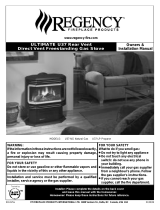 Regency Fireplace Products U37-LP PROPANE User manual
Regency Fireplace Products U37-LP PROPANE User manual
-
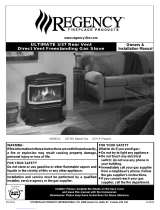 Regency Fireplace Products U37-LP PROPANE User manual
Regency Fireplace Products U37-LP PROPANE User manual
-
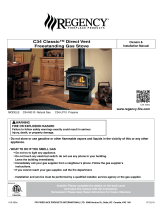 Regency Fireplace Products Classic C34 Owner's manual
Regency Fireplace Products Classic C34 Owner's manual
-
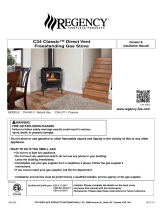 Regency Fireplace Products Classic C34 Owner's manual
Regency Fireplace Products Classic C34 Owner's manual
-
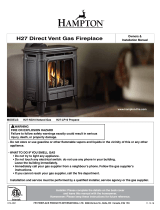 Regency Fireplace Products H27 Owner's manual
Regency Fireplace Products H27 Owner's manual
-
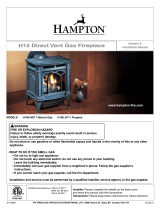 Regency Fireplace Products H15 Owner's manual
Regency Fireplace Products H15 Owner's manual
-
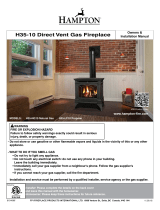 Regency Fireplace Products H35 Owner's manual
Regency Fireplace Products H35 Owner's manual
-
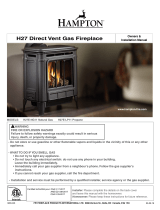 Regency Fireplace Products H27 Owner's manual
Regency Fireplace Products H27 Owner's manual
-
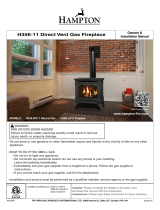 Regency Fireplace Products H35 Owner's manual
Regency Fireplace Products H35 Owner's manual
-
 Regency Fireplace Products Contura RC500E Owner's manual
Regency Fireplace Products Contura RC500E Owner's manual
Other documents
-
KitchenAid KPEC992MSS1 User manual
-
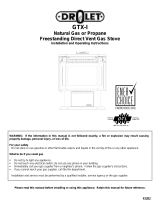 Drolet Nova 820 User manual
Drolet Nova 820 User manual
-
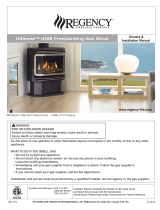 Regency Fireplace Products Ultimate U39E Owner's manual
Regency Fireplace Products Ultimate U39E Owner's manual
-
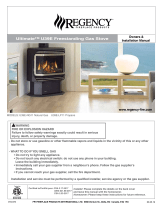 Regency Fireplace Products Ultimate U39E Owner's manual
Regency Fireplace Products Ultimate U39E Owner's manual
-
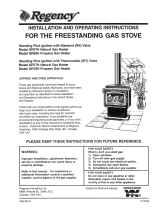 Regency Fireplace Products GR57 Owner's manual
Regency Fireplace Products GR57 Owner's manual
-
SPT 10156 Installation guide
-
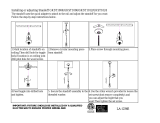 George Kovacs GKST1004-084 User manual
George Kovacs GKST1004-084 User manual
-
George Kovacs GKST1006-084 User manual
-
George Kovacs GKST1006-084 User manual
-
Simpson Dura-Vent 5"x 8" Direct Vent System Installation Instructions Manual






















































